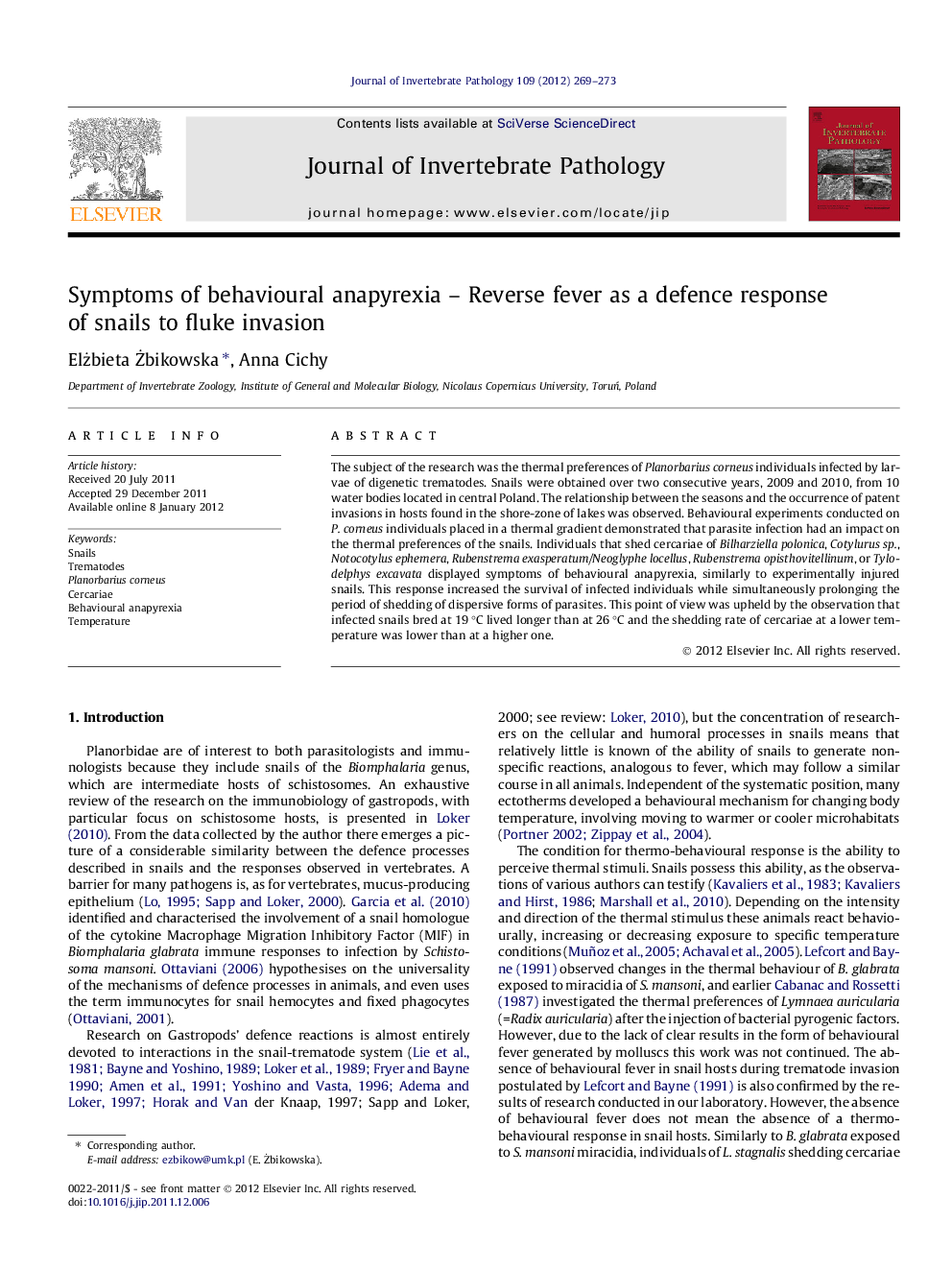| Article ID | Journal | Published Year | Pages | File Type |
|---|---|---|---|---|
| 6389780 | Journal of Invertebrate Pathology | 2012 | 5 Pages |
The subject of the research was the thermal preferences of Planorbarius corneus individuals infected by larvae of digenetic trematodes. Snails were obtained over two consecutive years, 2009 and 2010, from 10 water bodies located in central Poland. The relationship between the seasons and the occurrence of patent invasions in hosts found in the shore-zone of lakes was observed. Behavioural experiments conducted on P. corneus individuals placed in a thermal gradient demonstrated that parasite infection had an impact on the thermal preferences of the snails. Individuals that shed cercariae of Bilharziella polonica, Cotylurus sp., Notocotylus ephemera, Rubenstrema exasperatum/Neoglyphe locellus, Rubenstrema opisthovitellinum, or Tylodelphys excavata displayed symptoms of behavioural anapyrexia, similarly to experimentally injured snails. This response increased the survival of infected individuals while simultaneously prolonging the period of shedding of dispersive forms of parasites. This point of view was upheld by the observation that infected snails bred at 19 °C lived longer than at 26 °C and the shedding rate of cercariae at a lower temperature was lower than at a higher one.
Graphical abstractDownload full-size imageHighlight⺠We studied thermal preferences of Planorbarius corneus infected by trematodes. ⺠Experiments showed that parasites had an impact on the thermal preferences of snails. ⺠Majority individuals that shed cercariae displayed symptoms of behavioural anapyrexia. ⺠This response increased the snail survival and the period of shedding Cercariae.
